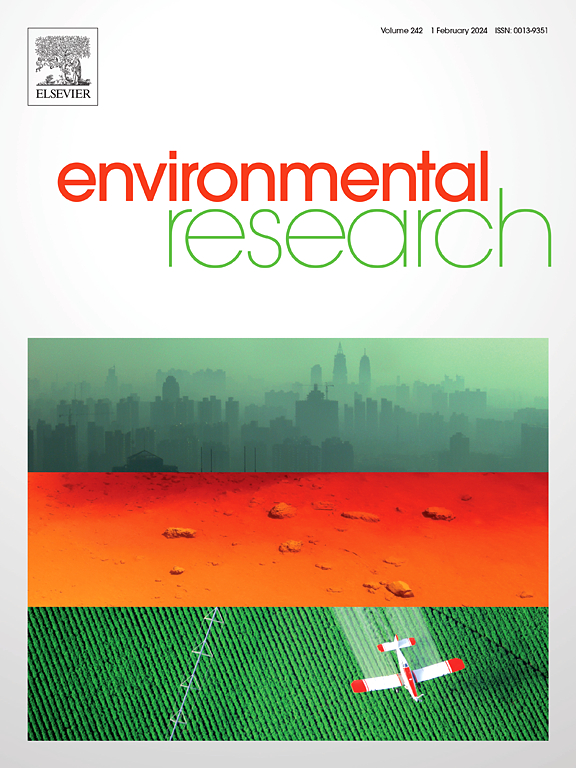Polystyrene microplastics (PS-MPs): A Review on metabolic disruptions and potential obesogenic implications using -omics approaches based evidences on zebrafish model
IF 7.7
2区 环境科学与生态学
Q1 ENVIRONMENTAL SCIENCES
引用次数: 0
Abstract
The ubiquitous exposure of living organisms to microplastics (MPs) is well documented. In particular, polystyrene MPs (PS-MPs) are among the most frequently detected and persistent plastics in the environment. Recently, growing evidence showed that PS-MPs could interfere with several metabolic pathways, resulting in alteration of lipid and energy metabolism, as well as multiple metabolic disorders, in zebrafish (ZF). These findings may support the obesogenic potential of MPs, which could be unsuspected key drivers of obesity's expanding prevalence in the world over the last decades, particularly with the parallel increase in plastics production. In this Review, we focus on recent -omics based studies to provide a comprehensive synthesis of the metabolic disturbances provoked by PS-MPs and their obesogenic potential in ZF. This literature Review revealed that PS-MPs could induce metabolic alterations, mostly affecting glycolipid metabolism and energy homeostasis at the transcriptomic and metabolomic levels. Microbiota dysbiosis may also largely contribute to the obesogenic effects. Although some key pathways are suggested as candidate obesogenic mechanisms of PS-MPs additional studies integrating multi-omics approaches are needed to fully understand the mechanistic/molecular basis of PS-MPs in ZF. Functional analyses such as mitochondrial respiration assays, microbiota manipulation/transplantation as well as in vitro mechanistic studies are also required to support -omics findings.
聚苯乙烯微塑料(PS-MPs):基于斑马鱼模型证据的代谢干扰和潜在致胖意义的-组学方法综述。
生物普遍暴露于微塑料(MPs)是有案可查的。特别是聚苯乙烯MPs (PS-MPs)是环境中最常检测到的持久性塑料之一。近年来,越来越多的证据表明,PS-MPs可以干扰斑马鱼(ZF)的几种代谢途径,导致脂质和能量代谢的改变,以及多种代谢紊乱。这些发现可能支持MPs的致肥潜力,这可能是过去几十年肥胖在世界范围内不断扩大的主要驱动因素,特别是与此同时塑料生产的增加。在这篇综述中,我们重点介绍了最近基于组学的研究,以全面综合PS-MPs引起的代谢紊乱及其在ZF中的致肥潜力。本文献综述显示,PS-MPs可诱导代谢改变,主要影响转录组学和代谢组学水平的糖脂代谢和能量稳态。微生物群失调也可能在很大程度上导致肥胖效应。虽然一些关键途径被认为是PS-MPs的候选致肥机制,但需要更多的多组学方法的研究来充分了解PS-MPs在ZF中的机制/分子基础。功能分析,如线粒体呼吸测定,微生物群操作/移植以及体外机制研究也需要支持-组学的发现。
本文章由计算机程序翻译,如有差异,请以英文原文为准。
求助全文
约1分钟内获得全文
求助全文
来源期刊

Environmental Research
环境科学-公共卫生、环境卫生与职业卫生
CiteScore
12.60
自引率
8.40%
发文量
2480
审稿时长
4.7 months
期刊介绍:
The Environmental Research journal presents a broad range of interdisciplinary research, focused on addressing worldwide environmental concerns and featuring innovative findings. Our publication strives to explore relevant anthropogenic issues across various environmental sectors, showcasing practical applications in real-life settings.
 求助内容:
求助内容: 应助结果提醒方式:
应助结果提醒方式:


